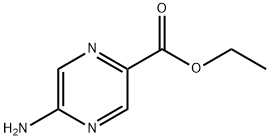In a chemistry laboratory, a researcher is analyzing the composition of various compounds. One of the compounds under investigation is sulfate. The researcher asks, "What is the charge of an ion of sulfate?"
Derived Questions
1.What elements are present in a sulfate ion?
2.How does the charge of a sulfate ion affect its chemical reactions?
What is the charge of an ion of sulfate?
Related Products More >
-
- 108-80-5
- USD 50.0000
- 50kg
-
- 108-78-1
- USD 4.5000
- 25kg
-
- 4559-86-8
- USD 750.0000
- 170kg
-
- 77182-82-2
- equest For Quotation
-
- 70131-50-9
- equest For Quotation



 沪ICP备2021018848号-5
沪ICP备2021018848号-5

The charge of an ion of sulfate is -2. This is because sulfate, which is composed of sulfur and oxygen, forms an anion (negatively charged ion) when it gains electrons. Specifically, sulfate (SO₄) has four oxygen atoms, each of which typically has a -2 charge when bonded to sulfur. However, the sulfur atom has a +6 charge to balance the overall charge of the ion, resulting in a net charge of -2.
Answer to Derived Question 1:
A sulfate ion is composed of sulfur (S) and oxygen (O). In chemical notation, it is represented as SO₄²⁻, indicating that it has one sulfur atom and four oxygen atoms, with an overall charge of -2.
Answer to Derived Question 2:
The charge of a sulfate ion (-2) affects its chemical reactions in several ways. Firstly, it determines how the ion will interact with other ions in solution. For example, sulfate ions are often found in combination with positively charged ions (cations) to form salts, such as sodium sulfate (Na₂SO₄) or calcium sulfate (CaSO₄). Secondly, the charge of the sulfate ion influences its solubility in water and other solvents. Generally, sulfate salts are soluble in water, which is important for their use in various applications such as fertilizers, detergents, and industrial processes.
Usage and Application Notes
When working with sulfate ions and related compounds, it is important to be aware of their chemical properties and potential hazards. Sulfate compounds can be toxic or corrosive, depending on their specific form and concentration. Therefore, proper handling and disposal procedures should be followed to minimize risks to health and the environment. Additionally, when determining the charge of an ion, it is crucial to understand the underlying chemical principles, such as electronegativity and bonding, to ensure accurate analysis and interpretation of experimental results.
The sulfate ion is composed of one sulfur atom and four oxygen atoms. In this ion, sulfur has an oxidation state of +6 and each oxygen atom has an oxidation state of -2. The sum of the oxidation states in the sulfate ion is calculated as follows: (+6) + 4×(-2) = +6 - 8 = -2. This -2 charge is what gives the sulfate ion its characteristic electrical charge. The sulfate ion is very common in chemistry and is involved in many chemical reactions and compounds. For example, in compounds like sodium sulfate, two sodium ions with a +1 charge each are needed to balance the -2 charge of the sulfate ion to form a neutral compound.